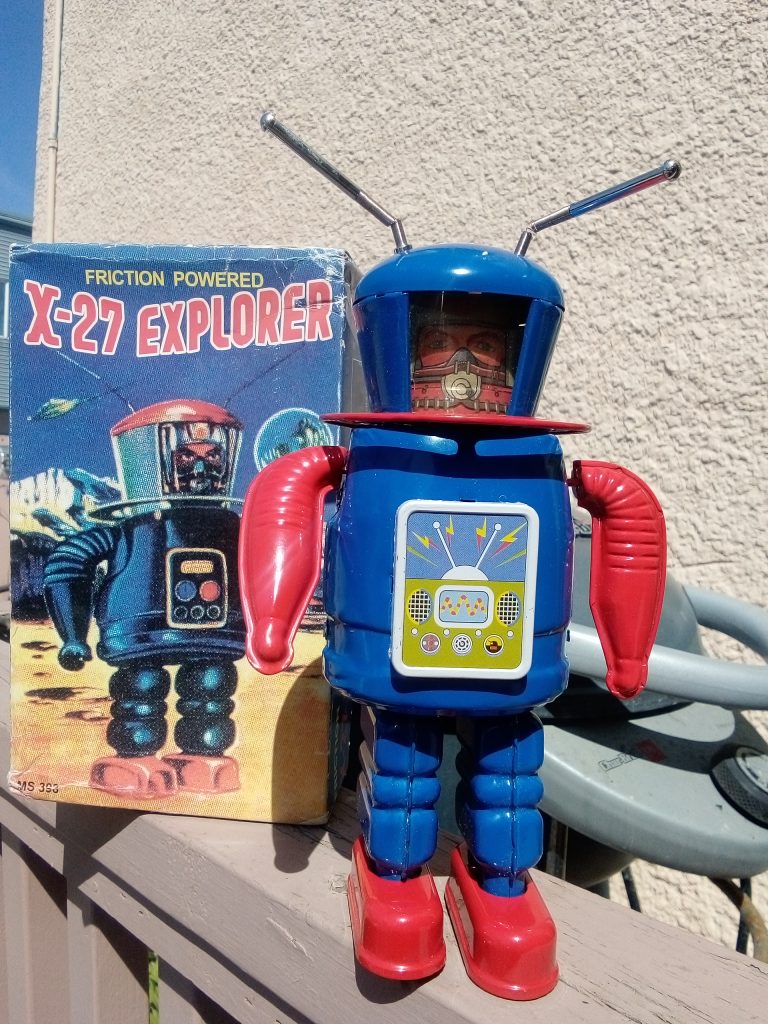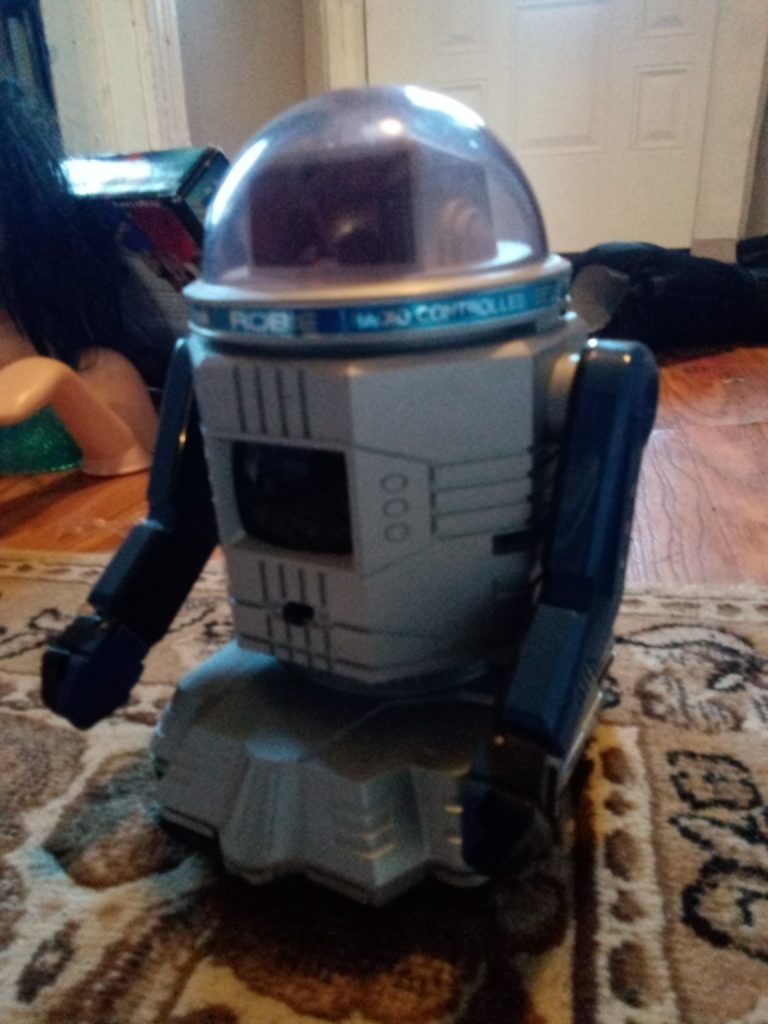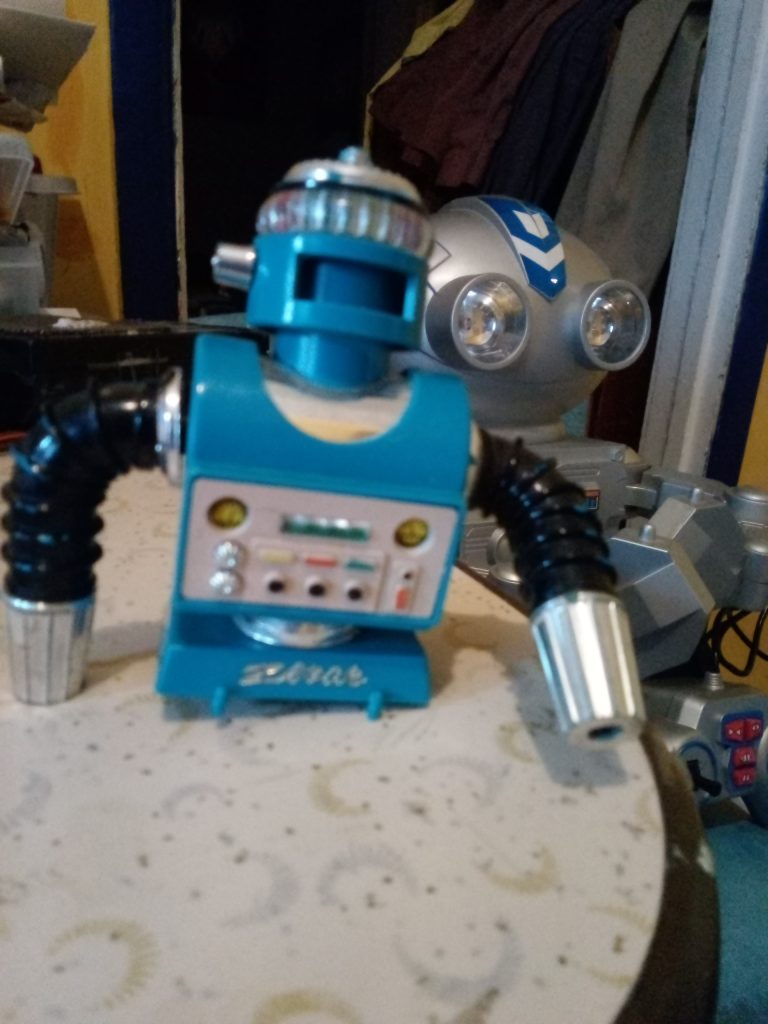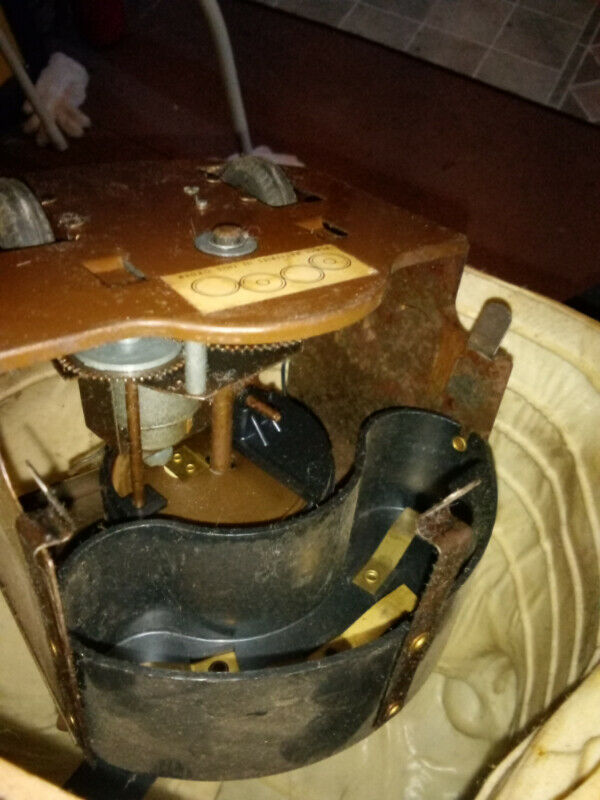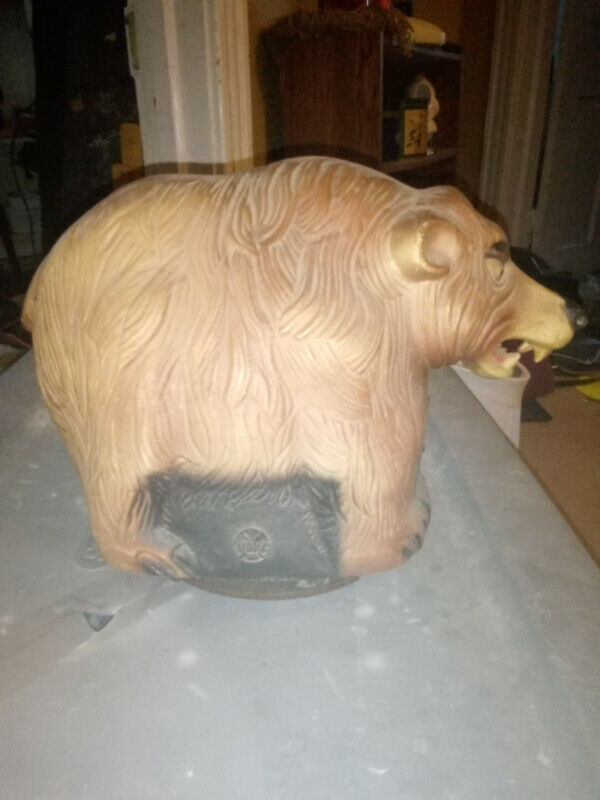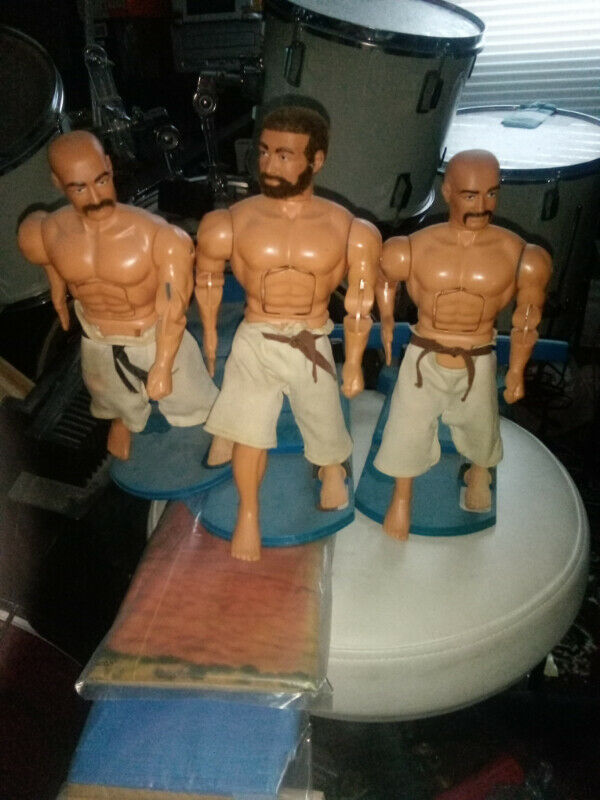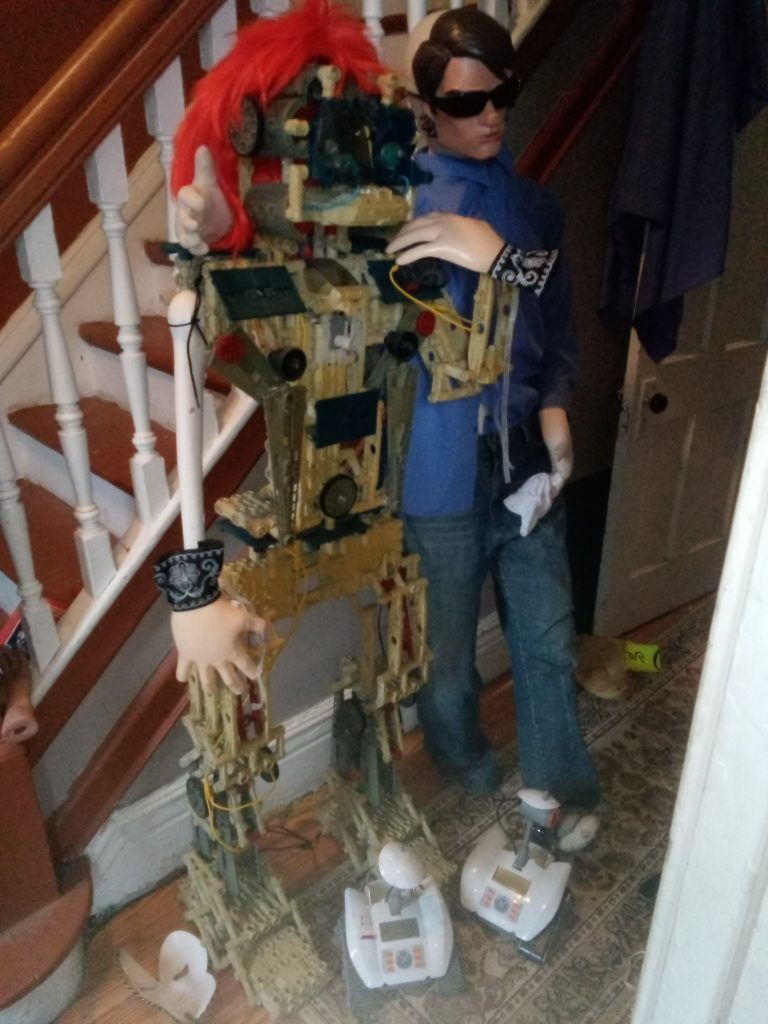old history
In this section we will try to shed some light on the history of the toy robot.
We mentioned in another section what a robot is and that the first mention of the word robot came from a 1920s play written by Carl Kapek called RUR Rossums universal Robot and the word robot was Czech for forced labor.
But sure we could go back to the cave days and claim that artistic pictures of strange creatures on the cave walls could have been god like idols or maybe creatures that some caveman dreamt about one night and looked like a robot.
We could go a bit later into the Japanese Edo period where Japanese robots were creatures that posed no threat and were even given human emotions and free will. A Japanese craftsman named Hisashige Tanaka, who lived from 1799 to 1881, made karakuri dolls, which were early automatons that moved through spring action. They could serve tea, shoot arrows, and even write.
But for the most part our toy history begins with the tin metal robots mass produced after war time.
So here we will probably start off in the 1940s with metal or tin type robots which looked like mechanical people and came from Japan after WW2.
Basically after the war Japan was not allowed to produce too many things especially not military things so they turned to toys and found that robots were a hit in America.
It is generally agreed that the robot toy called Robot Lilliput with its boxy yellow metal body was the first robot manufactured followed by the Atomic Robot man.
US toy importers like Marx, Rosco, Cragstan and Mego began selling toys manufactured by big Japanese toy makers like Masudaya, Nomura, Daiya, Yoshiya, Yonezawa and Horikawa.
These first Japanese toys were friction or clockwork powered, stamped steel and base
shortly after the war, most of the first robots were actually American made. The first to show up in the Sears Christmas Book was Ideal’s crank operated Robert the Robot in 1954. Soon came, Marvelous Mike, The Robot Dog, Z-Man, Big Max and Marx Electric robot, all American made.
A movie created a robot frenzy where every kid wanted a robot called Forbidden Planet which was during the time of the 1957 space launch of the Sputnik.
Every toy company seemed to make their own version of Robby the robot and gave it names like Planet Robot and Mechanized Robot.
Since early Japanese toy robots were made from scrap metal it is apparently possible to find one that has the original tuna can markings on it or perhaps a powdered milk container.
Japanese battery operated toys was the Horikawa company who used the trade logo SH . Horikawa sold literally hundreds of different tin robots, rockets and space stations.
In 1963, tin toys accounted for 60 percent of Japan’s toy exports.
54, Ideal Toy Corporation introduced remote-control Robert the Robot, who had light-up eyes, swinging arms, and the ability to walk and talk. After Robert, Marvelous Mike, The Robot Dog, Z-Man, Marx Electric Robot, and Big Max hit the scene. However, it was the Japanese, who, in 1955, introduced the first battery powered robot.
The most popular Japanese robot character Testuwan Atomu, known as Mighty Atom or Astro Boy.
The Metal House toy company was founded as Marumiya in 1943. It produced some well-known tin toys. Especially familiar to collectors of battery-operated tin toy robots, the firm originally operated as a subcontractor producing toys for some of the most prolific Japanese toy companies such as Horikawa, Nomura, and Yonezawa during the post World War II heyday of tin toys.
A long list of popular toys were manufactured by Marumiya during this period. One of the earliest big successes in the mid-to late 1950s was Nomura’s Zoomer Robot. A series of toys based upon the Robby the Robot character brought to life by MGM’s 1956 movie Forbidden Planet such as Piston Robot and Mechanized Robot were also quite successful and are highly sought after today.
Well-known Horikawa toy robots include Smoking Spaceman, Machine Robot, Fighting Robot, and Attacking Martian, all of which were ground-breaking entries into the field with lengthy production runs.
Some categories of early robot toys were the following:piston robots, windup robots, smoking and spinning, rotate, gear robots, bump and go television robots and thunder robots.
HERO
HERO (Heathkit Educational RObot) is a series of several educational robots sold by Heathkit during the 1980s. The Heath Company began had the first release in 1982 and included the HERO 1, HERO Jr., and HERO 2000.
Heathkit supported the HERO robot line until 1995. They did some useful household tasks but were more promoted as an educational toy.
HERO 1 was a self contrained robot powered by a Motorola 6808 CPU and 4 kB of RAM. The robot had light, sound, and motion detectors as well as a sonar ranging sensor. It had an optional arm and a limited speech synthesizer.
HERO 1 is featured on a few episodes of the children’s television program Mr. Wizard’s World.
A smaller version called HERO Jr. was released later. Heathkit intended it for the home marke.
The HERO Jr. had a 6808 processor, but only 2 kB of RAM.
It has onboard speech synthesis, a Polaroid sonar range sensor, a light sensor, a sound sensor, and an optional infrared sensor.
It had a very primitive motion detector that grunted a sound when it hit something
It could remember the owners name sang songs, reciting poems, and could be used as an alarm clock.
Robotix was a toy first marketed by Milton Bradley 84-86. In the 1990s and 2000 it was sold by RC2 Corporation under the Learning Curve brand.
Apparently the Robotix line was stopped in 2021 due to financial problems brought about by the pandemic but the trading of parts with hardcore fans does continue.
Lets talk about the Meccano robots which came with about 1,000 parts!
There was a micro version then a 2 foot G15 one and a 4 foot tall G15KS (Kids size) with more motors and later came the XL.
It had 10 motors for realistic movements; Eight (8) smart servos localized in the arms and head that remember your moves, 2 motors to drive the feet and big LED eyes.
It had a brick memory unit called the Meccabrain which was a 4-channel micro controller with 128 Mb of flash memory. The Lego company had their own version and brick called the Nxt or later the EV3.
It could be made to work or programmed in 3 innovative ways: LIM (Learned Intelligent Movement), Ragdoll Avatar, Drag and Drop Programming.
Voice Recognition – Meccanoid can respond to more than 40 pre-programmed voice commands and over 70 other unique phrases.
Highly interactive features include Dance, Kung Fu, Exercise, and High-Five modes
Twelve (12) different modes of interactivity and Autonomous personality that is affected by its environment
